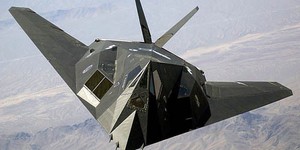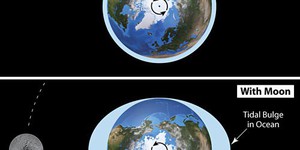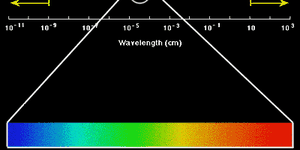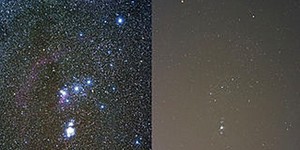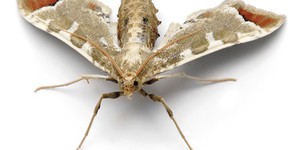Others Like “Measuring the Moon's Brightness” (top 20 results)
|
Some claim the Moon appears larger when near the horizon. Make a series of observations of the Moon, measuring the Moon's angular diameter each time. You should also note the Moon's altitude above the horizon, and the Moon's phase. You should do background research on the lunar orbit to determine the necessary time period. Do you find predictable variations in the Moon's diameter? Can you relate this to the Moon's changing distance from Earth? From your data, try to determine when apogee and…
Read more
Have you ever dreamed about becoming invisible? Or about making something else invisible, like the mess all over your room? Invisibility may sound like the stuff of science fiction (remember Star Trek's "Cloaking Device"?), but in reality, military vehicles, like planes and ships, can be made less observable, or even invisible, to different detection methods—like radar, sonar, or infrared sensors—by using stealth technology. In this engineering science fair project, you'll find out…
Read more
Have you ever wondered what causes the tides in Earth's oceans? In this astronomy project, you will discover the answer for yourself! You will investigate how the Sun and Moon control tides in Earth's oceans.
Read more
You know how to make new colors by mixing paint or crayons. For example, you get green by mixing yellow and blue, or orange by mixing red and yellow. With paint, blue, yellow, and red are primary colors, which you can use to make other colors. Have you ever tried making colors with light? Are the primary colors the same ones you use for paint? Do this experiment and find out.
Read more
Get good photographs of the Moon showing lots of craters and count how many craters you find in a range of diameter classes. One useful source is the Consolidated Lunar Atlas (Kuiper et al, 2006). Make a histogram that shows the distribution of diameters. Most of these craters were formed during the first billion years of the Moon's formation, but you should confirm that this is true for the the Moon areas you've selected in your photographs by doing background research. Is cratering uniform…
Read more
Do you wake up at the crack of dawn, or do you need an alarm clock to wake you up each morning? It may surprise you that the two are not always in synch. Nowadays, we use Standard Time to set our watches instead of Solar Time. Which method of timekeeping is the most accurate? Get ready to synchronize your watches!
Timekeeping is the science of how to keep time with precision and accuracy. People have been finding ways of measuring time for thousands of years, usually based on the movements…
Read more
This is a great project for someone interested in both stargazing and photography. Bright city lights and even the light of the full Moon obscure the dimmest stars, which can make identifying constellations more difficult. In this astronomy science project, you will calibrate a digital camera to measure the skyglow in different locations. This can be a great tool to comparing the quality of different star viewing locations.
Read more
The Kepler space telescope is a retired space telescope launched by NASA to discover Earth-size planets orbiting other stars. Named after astronomer Johannes Kepler, the spacecraft was launched on March 7, 2009, into an Earth-trailing heliocentric orbit. The principal investigator was William J. Borucki. After nine years of operation, the telescope's reaction control system fuel was depleted, and NASA announced its retirement on October 30, 2018.
Designed to survey a portion of Earth's region…
Read more
You are coming into the house after a game of flashlight tag with your friends, but the front porch light is not on for you to see the doorknob! What is going on? Maybe your parents know that turning a light on means moths will gather there, and they do not want you letting moths inside when you open the door. You have probably noticed how moths are attracted to lights at night. They will even fly dangerously close to flames in their journey toward light. In this project, you will learn a…
Read more
Make a pinhole projector (see Measuring the Diameter of the Sun and the Moon). Use the pinhole to project an image of the Sun onto a wall or a piece of paper. Do you notice any dark spots on the projected image? Trace the projected image and count the dark spots. Use your pinhole projector to make images of the Sun at the same time of day for several consecutive days. How does the pattern of spots change? Can you use your data to figure out how fast the Sun rotates? Sunspot activity rises…
Read more
|
Explore Our Science Videos
Design and 3D Print a Snowflake
Aluminum Foil Boat Design - STEM Lesson Plan
Magic Triangles - Fun Math Puzzles with Increasing Difficulty



